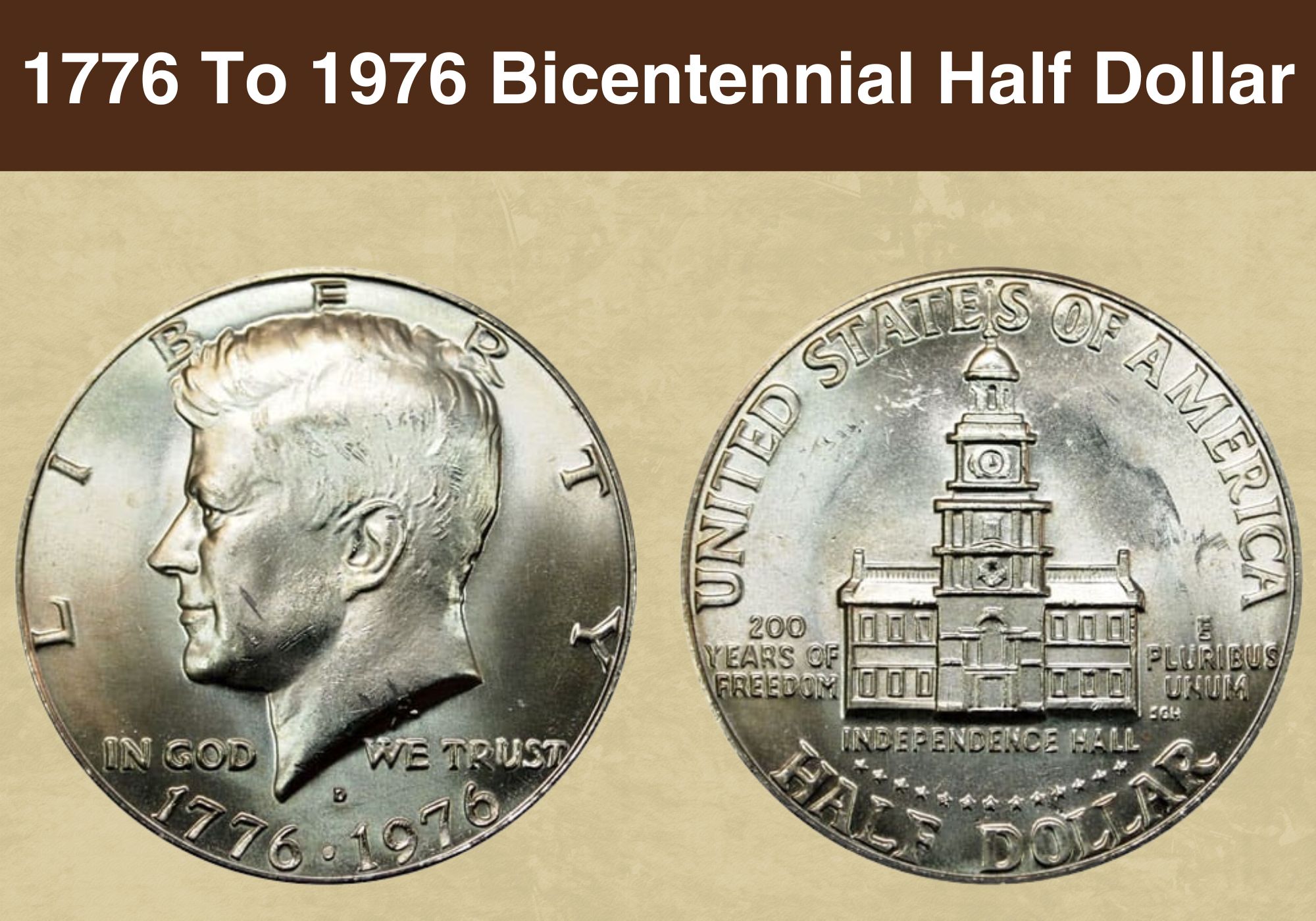
Coin Value Contents Table
- 1776 to 1976 Half Dollar Value Chart
- History of the 1776 to 1976 Half Dollar
- Features of 1776 to 1976 Half Dollar
- 1776 to 1976 Half Dollar Value Guides
- 1776 to 1976 Half Dollar No Mint Mark Value
- 1776 to 1976 D Half Dollar Value
- 1776 to 1976 S Half Dollar Value (Proof)
- 1776 to 1976 S Half Dollar (Silver, Regular)
- The 1776 to 1976 S Half Dollar (Silver, Proof)
- 1776 to 1796 Half Dollar Grading
- Rare 1776 to 1796 Half Dollar Error List
- Where to Sell Your 1776 to 1976 half Dollar ?
- FAQ
Are you a JFK enthusiast? Have you discovered a 1776 to 1976 half dollar with the late president’s portrait and wondered whether it is worth anything?
John Fitzgerald Kennedy was undoubtedly one of the most famous United States presidents. So, anything bearing his portrait is bound to be equally popular.
But is the Bicentennial Kennedy half dollar worth much? As you will find out, this coin is not rare; you can easily find it in your pocket change, but some errors can be worth hundreds of dollars!
Read on to learn everything you need about the 1776 to 1976 half dollar value. At the end of the article, you will make a smart decision as to whether the Kennedy half dollar is worth collecting.
Let’s get started!
1776 to 1976 Half Dollar Value Chart |
||||
| Mint mark | Good | Fine | Extremely Fine | Uncirculated |
| 1776 to 1976 Half Dollar No Mint Mark Value | $2 | $2 | $6 | $20 |
| 1776 to 1976 Half Dollar D Value | $0.75 | $0.75 | $6 | $14 |
| 1776 to 1976 Half Dollar S (Regular, Proof) Value | – | – | – | $18 |
| 1776 to 1976 Half Dollar S (Regular, Silver) | $4.15 | $4.15 | $7 | $140 |
| 1776 to 1976 Half Dollar S (Silver, Proof) | – | – | – | $2,800 |
History of the 1776 to 1976 Half Dollar
The year 1776 is one of the most important in American history as it marked the beginning of independence from British colonists. By this time, thirteen colonies had overthrown British rule and issued the Declaration of Independence on July 4, 1176.
In 1976 the country marked a historic milestone: 200 years of independence and sovereignty. As is customary, the federal and state governments organized various celebrations and feats to mark the anniversary in style.
As part of the celebrations, Congress approved minting three sets of Bicentennial coins. These include the Bicentennial Eisenhower Dollar, Bicentennial Kennedy Half Dollar, and the Bicentennial Washington Quarter.
The United States Mint struck and released the coins into circulation in 1976. The coins were issued for one year only in place of the regular coins.
Today, we’ll only focus on the 1776 to 1976 Kennedy half dollar.
John Fitzgerald Kennedy was the 35th president of the United States of America and also the youngest to be elected into office.
A Harvard graduate and Navy veteran, Kennedy rose from a Democratic Congressman to serving in the Senate, eventually clinching the ticket for a first-ballot nominee for president. He won against the Republican candidate, Richard Nixon, in a hotly contested race.
One of Kennedy’s most memorable adages is, “Ask not what your country can do for you; ask what you can do for your country.”
JFK was assassinated on November 22, 1963, after being in office for barely a thousand days. His memory lives on, and he remains one of the most celebrated presidents of all time.
Also read: 13 Most Valuable Franklin Half Dollars Worth Money
Features of 1776 to 1976 Half Dollar
This coin is also known as the Bicentennial half dollar, the Bicentennial Kennedy half dollar, or the 1776 to 1976 Kennedy half dollar.
Here is a look at some of its dominant features:
Obverse of 1776 to 1976 Half Dollar
The coin’s obverse or the upside (heads) features the left-facing portrait of President John Fitzgerald Kennedy.
The word LIBERTY appears boldly around the coin’s upper rim, while the dates 1776-1976 are inscribed around the lower rim. This date represents 200 years of independence from British rule.
The country’s motto: IN GOD WE TRUST, also appears on the coin’s obverse. You will also notice the initials GR underneath the president’s truncated neck. These stand for Gilroy Roberts, the coin’s obverse side engraver and designer.
Reverse of 1776 to 1976 Half Dollar
The coin’s reverse features the historic Independence Hall, where the Founding Fathers deliberated and adopted the Declaration of Independence and the Constitution.
Right underneath is the name of the building’s portrait, INDEPENDENCE HALL. Below, you will notice a slight half-curve of thirteen stars, representing the first thirteen states to gain independence from British colonial rule.
The words UNITED STATES OF AMERICA appear around the coin’s top rim, while the coin’s denomination, HALF DOLLAR, is imprinted around the lower rim.
To the left of the Independence Hall Portrait, you will notice the words 200 YEARS OF FREEDOM. To the right is the motto E PLURIBUS UNUM.
Seth G. Huntington engraved the coin’s reverse side. His initials, SGH, appear just underneath the motto E PLURIBUS UNUM.
Other Features of 1776 to 1976 Half Dollar
This is a circulating commemorative coin produced in 1976. The Bicentennial half dollar is made of a pure copper center and clad in 75% Copper and 25% Nickel.
It weighs 11.30 grams with a diameter of 31.00 millimetres and a thickness of 2.15 millimetres. The coin has a reeded edge.
The Kennedy Bicentennial half dollar was minted in Philadelphia, Denver and San Francisco. Those from Philadelphia do not have a mint mark. In contrast, those minted in Denver and San Francisco have mintmarks D and S on the obverse underneath the president’s truncated neck.
Watch this video to learn more about this fascinating Bicentennial coin.
Also read: 13 Most Valuable Kennedy Half Dollar Worth Money
1776 to 1976 Half Dollar Value Guides
There are five varieties of the 1776 to 1976 Kennedy half dollar.
The coin’s value largely depends on its condition. As a general rule, 1976 Kennedy half dollars in circulated condition are less valuable than those in uncirculated condition.
So, how much is 1776 to 1976 half dollar worth? Let’s take an in-depth look at the value of each of the five varieties of this coin. They are:
- 1776 to 1976 Half Dollar No Mint Mark
- 1776 to 1976 D Half Dollar
- 1776 to 1976 S Half Dollar (Clad, Proof)
- 1776 to 1976 S Half Dollar (Silver, Regular)
- 1776 to 1976 S Half Dollar (Silver, Proof)
1776 to 1976 Half Dollar No Mint Mark Value
In 1976, the U.S. Mint facility in Philadelphia minted approximately 234,308,000 Kennedy half dollars in honor of the Bicentennial celebrations. These copper-clad coins do not have a mint mark.
The Mint released a large number of these coins into circulation, so most are in circulated condition. No mint mark half dollars are common; you can easily find them in pocket change.
In their circulated condition, the no-mint mark Bicentennial half dollar is worth about $1, slightly more than its face value. A coin graded slightly used or about uncirculated can fetch up to $2.
These coins increase in value in their uncirculated condition. An uncirculated 1976 Kennedy half-dollar can fetch between $3 and $4.
Because most of these coins were released into circulation, uncirculated ones are extremely rare, so their value can easily shoot upwards, especially for coins in mint condition, i.e. those graded MS63 to MS70.
Records by the Professional Coin Grading Company (PCGC) show that the most expensive 1776 to 1976 half dollar was graded MS64 and sold for $3,150.
1776 to 1976 D Half Dollar Value
The Denver facility struck about 287,565,248 Bicentennial Kennedy dollars, which bear the D mint mark on the obverse.
Like the ones struck in Philadelphia, the coins originating from the Denver mint were widely circulated, so these coins are common.
In circulated condition, your 1776 to 1976 D half dollar is worth about $2. The coin’s value might decrease to close to its face value of $0.5 if it is very worn with significant dings and dents.
Uncirculated 1976 D half dollars are rare and pricier than their circulated counterparts. A coin-graded mint state (MS) 60 can fetch about $6, while one graded MS65 can bring in up to $40.
In a record-breaking auction, a 1776 to 1976 D half dollar sold for $10,000 in 2021.
1776 to 1976 S Half Dollar Value (Proof)
The U.S. Mint struck approximately 7,059,099 proof Bicentennial half dollars at the San Francisco facility. Proof coins are specifically struck and sold to collectors.
Proofs are struck using special dies to highlight stunning details and brilliant contrasts. For this reason and because the Mint produces a few of them, proofs fetch a higher value than regular strike coins.
A 1976 Kennedy half dollar proof is worth about $8 for one graded PF67, but the value increases to $18 for a coin at the highest end of the grade.
1776 to 1976 S Half Dollar (Silver, Regular)
In 1976, the U.S. Mint in San Francisco also struck silver Kennedy half dollars. These special silver coins were uncirculated and only sold in a 3-piece mint set to interested collectors. Approximately 11,000,000 of these coins were struck as part of the Bicentennial celebrations.
The silver Kennedy half dollars comprises 79% copper and 21% silver core and a clad comprising 80% silver and 20% copper.
At grade MS60, these silver half dollars are worth around $8, but the value increases to $22 for those graded MS65. Those in ultra-mint state graded MS68 are rare and can fetch as much as $140.
The most expensive 1776 to 1976 silver half dollar is graded MS69 and sold for $9,600 in 2021.
The 1776 to 1976 S Half Dollar (Silver, Proof)
In addition to the regular silver strike, the Mint struck silver proofs. About 4,000,000 silver proofs were minted at the San Francisco facility with a similar composition to the regular strike Kennedy half dollars.
One specimen of the 1976 S silver dollars graded PF70 was auctioned for $2,800 in 2020. These coins are extremely rare. If you find one, it might earn you a fortune!
Also read: 11 Most Valuable Half Dollars In Circulation
1776 to 1796 Half Dollar Grading
The 1796 Kennedy half dollar grading is mainly based on the coin’s condition. Circulated coins typically show wear and tear, missing letters, and diminished images. This can lower the value of the coin.
Uncirculated bicentennial half dollars are relatively rare. These coins have a shiny lustre, little to no wear and tear, and must be esthetically appealing. Not only are these coins graded higher, but they also generally fetch a higher value.
Rare 1776 to 1796 Half Dollar Error List
Some errors can significantly increase a coin’s value. Let’s look at some unique mint errors spotted in the 1976 Kennedy half dollar series.
1776 to 1796 Half Dollar Curved Clip Error
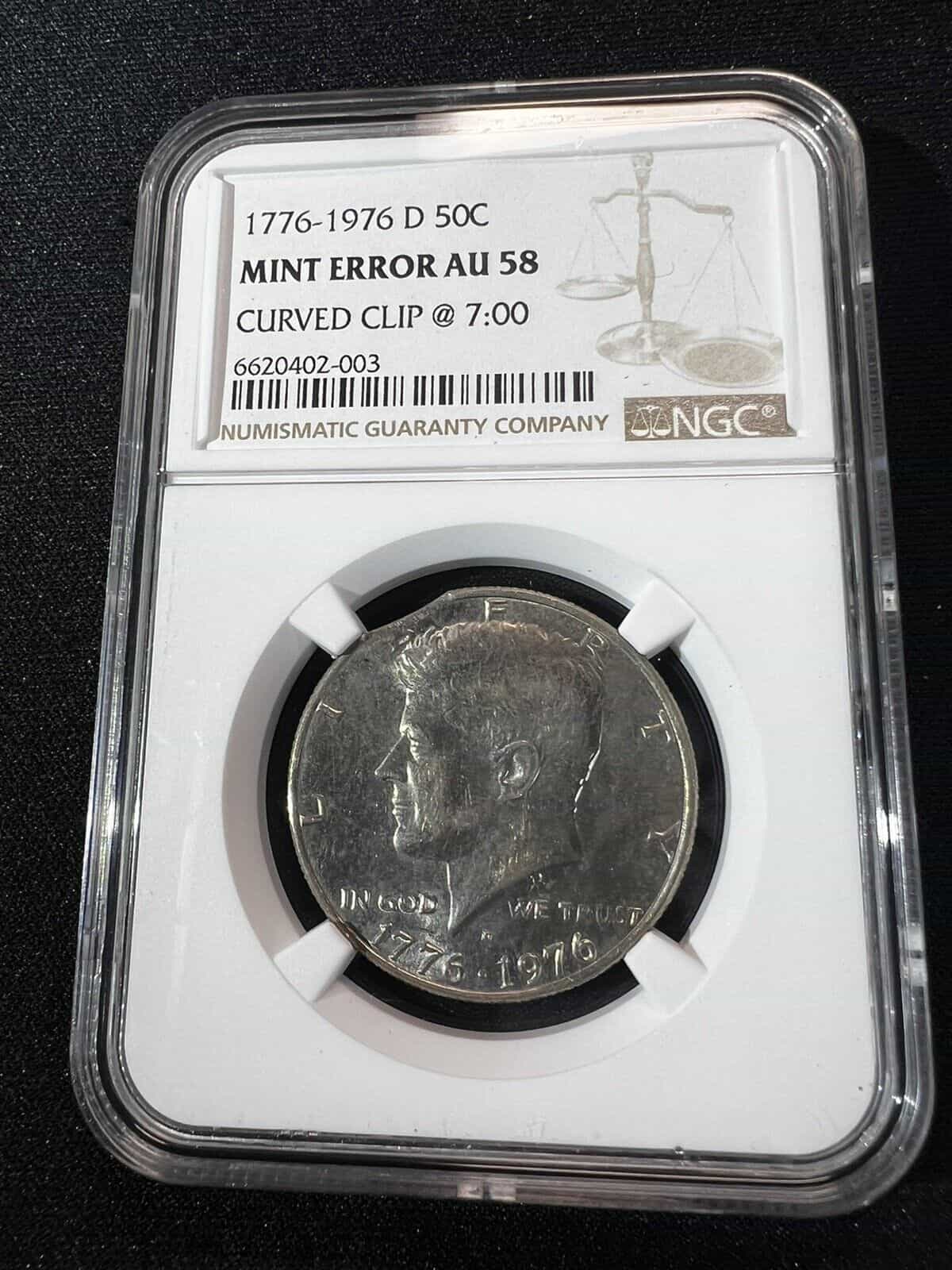
The curved clip is one of the most interesting errors in the Bicentennial coin series. This minting error occurs when the punching machine chips off a portion of a blank planchet. The die then imprints the coin design onto a clipped planchet resulting in a somewhat incomplete coin missing some details.
In this case, the date 1776-1976 is missing as part of the clipped portion.
1976 curved clip error coin can fetch $65-$69 depending on its condition and grading. As you can see, the value of such an error is many times more than that of a complete, wholesome coin with no error.
1776 to 1796 Half Dollar Brockage Error
The brockage error is another fascinating one that can be found in a few 1776 to 1796 Kennedy half dollars.
A brockage error occurs when an already minted coin sticks to the die. The stuck coin then imprints itself onto the next incoming blank planchet, producing a coin with a mirror image or inverted image of the first coin. So, for example, instead of Kennedy’s portrait facing left, it would face right due to this error.
A brockage error coin in mint condition can fetch as much as $4000.
Where to Sell Your 1776 to 1976 half Dollar ?
Now that you know the value of your coins, do you know where to sell those coins online easily? Don’t worry, I’ve compiled a list of these sites, including their introduction, pros, and cons.
Check out now: Best Places To Sell Coins Online (Pros & Cons)
FAQ
Are 1776 to 1976 half dollars worth anything?
A 1776 to 1976 half dollar coin is worth slightly more than its face value. Depending on the coin’s condition, you can expect about $2 to $8, with higher-graded coins earning more.
How much silver is in a 1776-1976 half dollar?
The U.S. Mint struck some 1776-1976 silver half dollars. These coins comprise an 80% silver out layer and a 21% silver core. It is important to remember that these coins are not purely silver; they have a copper core and are simply silver-coated or silver clad.
How can you tell if a 1976 half dollar is silver?
Bicentennial 1976 half dollars are not pure silver. Rather, these coins have a copper core of 79% and silver coating of 81%. You can confirm this by checking the coin’s edge. In this case, you will notice a copper stripe, meaning the coin has a copper center and a silver clad. Pure silver coins have a shiny silver stripe.

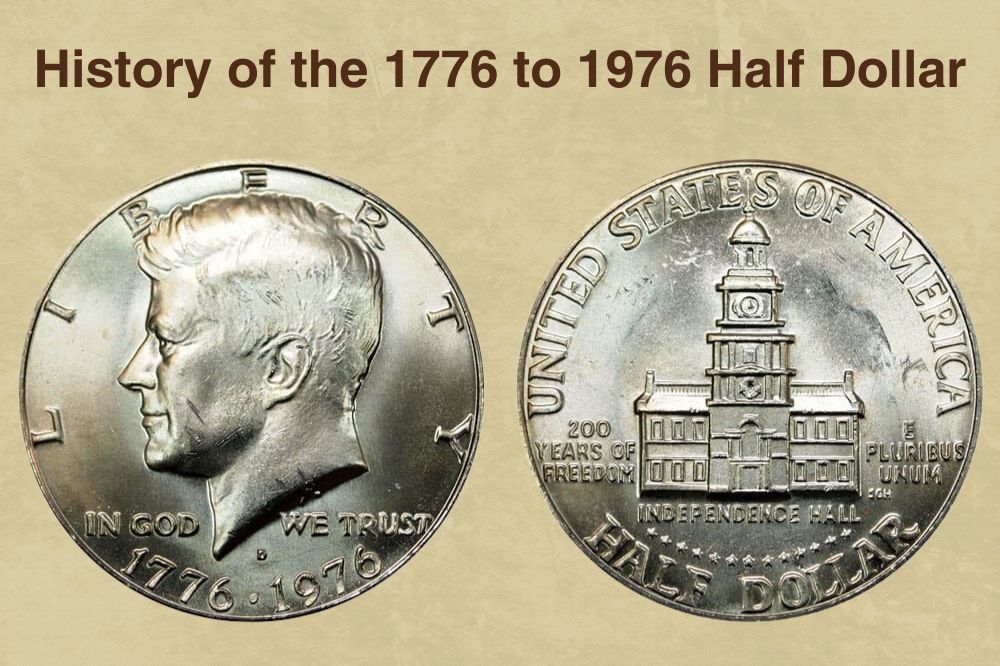
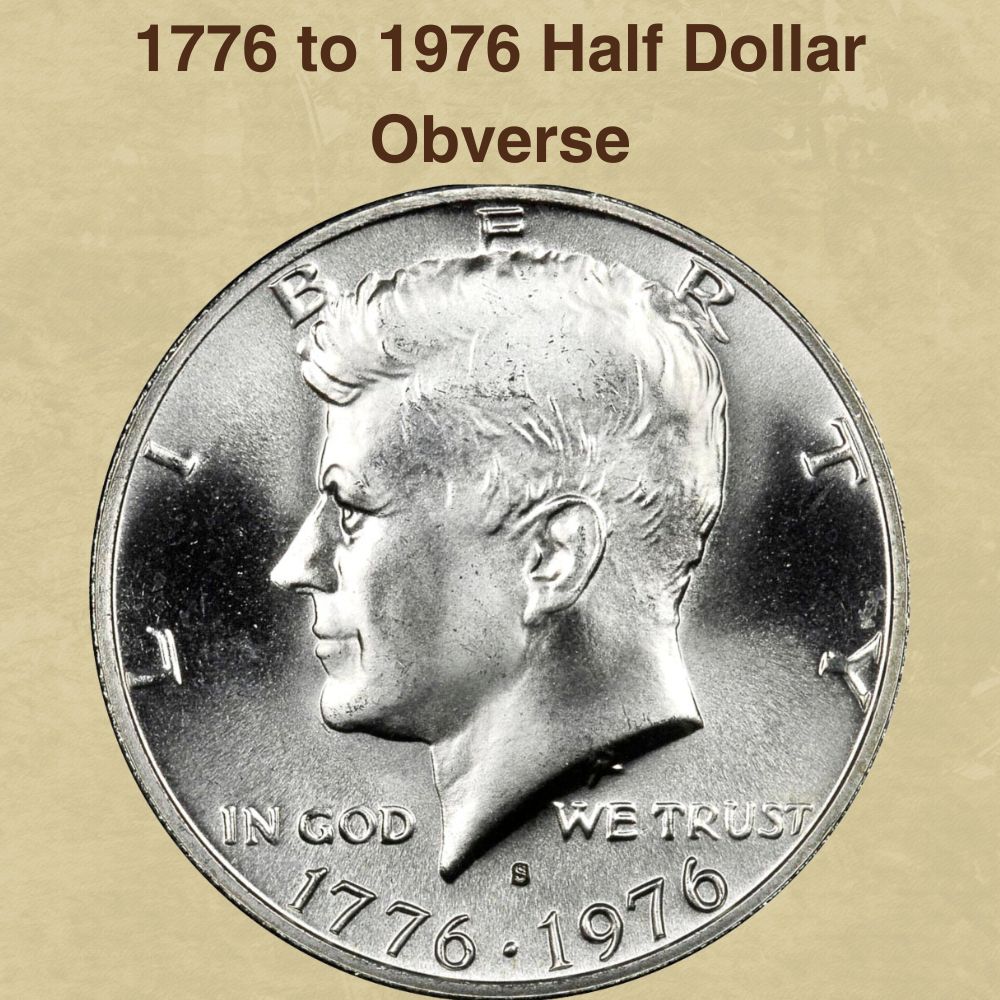
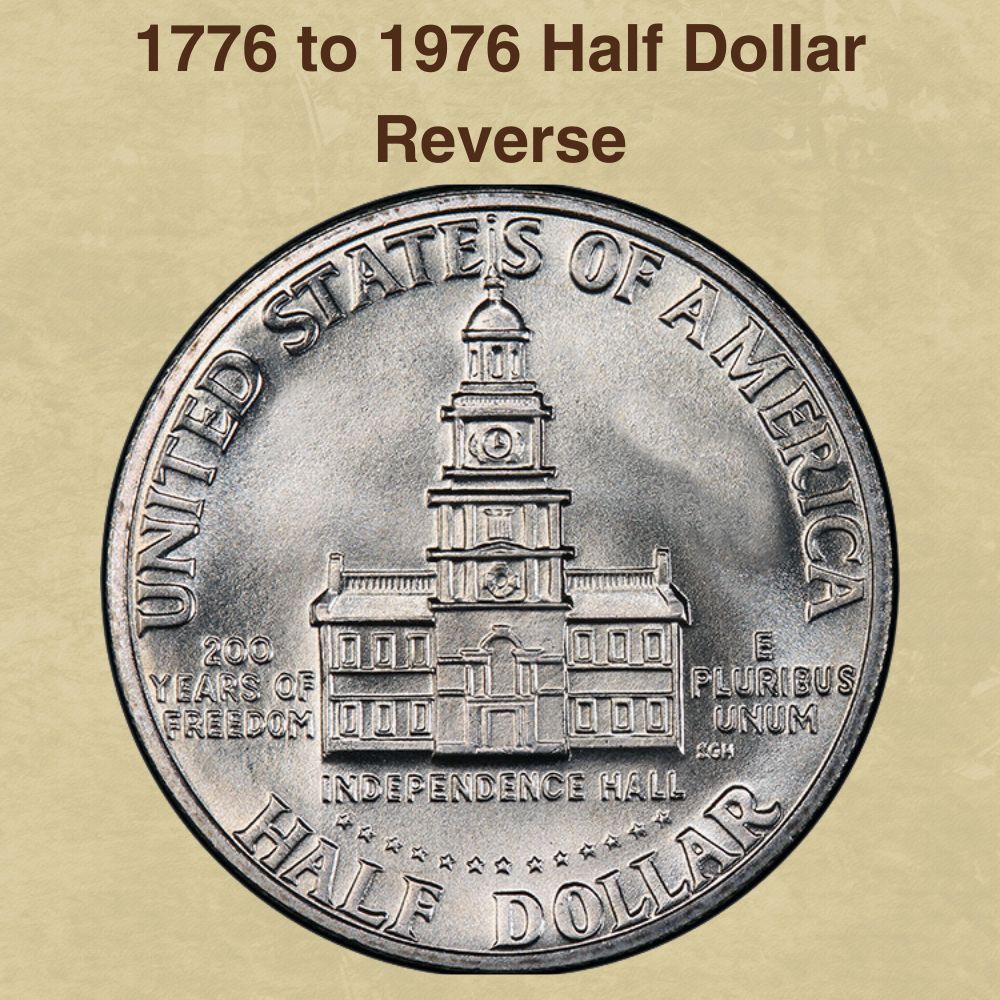
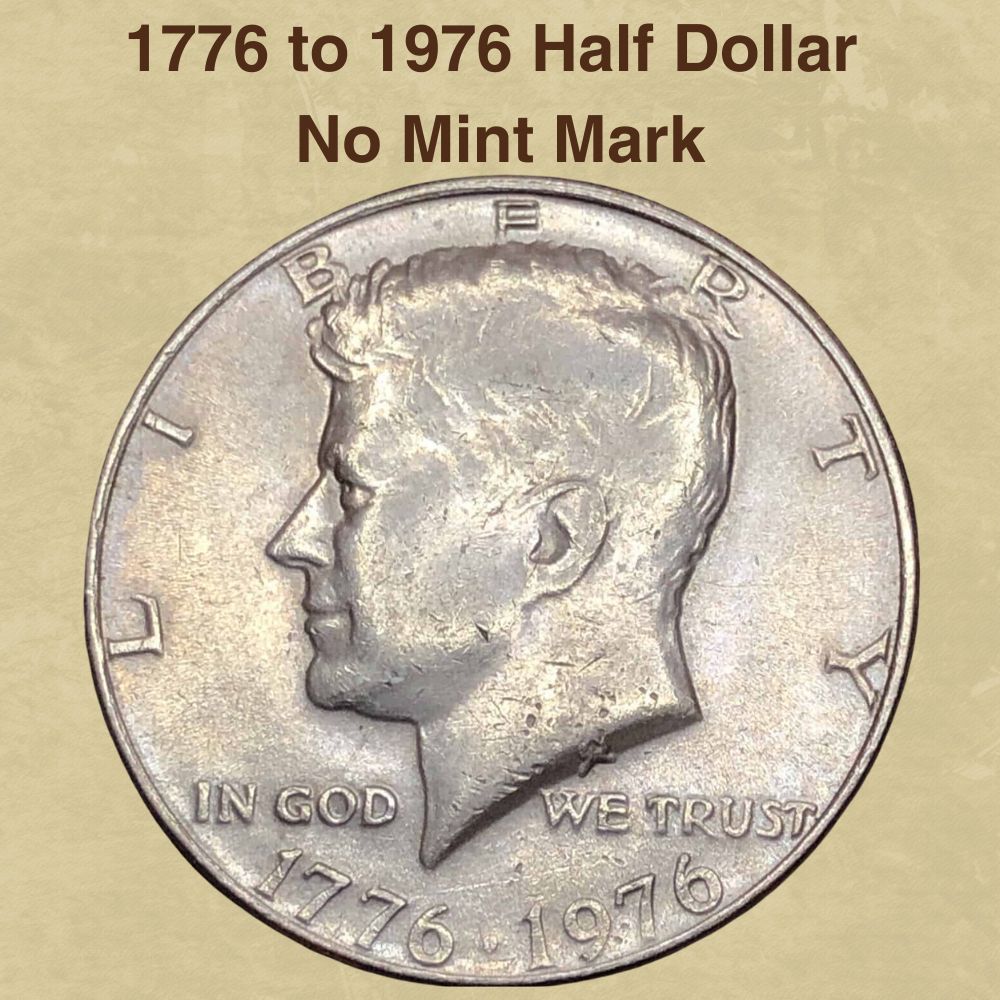
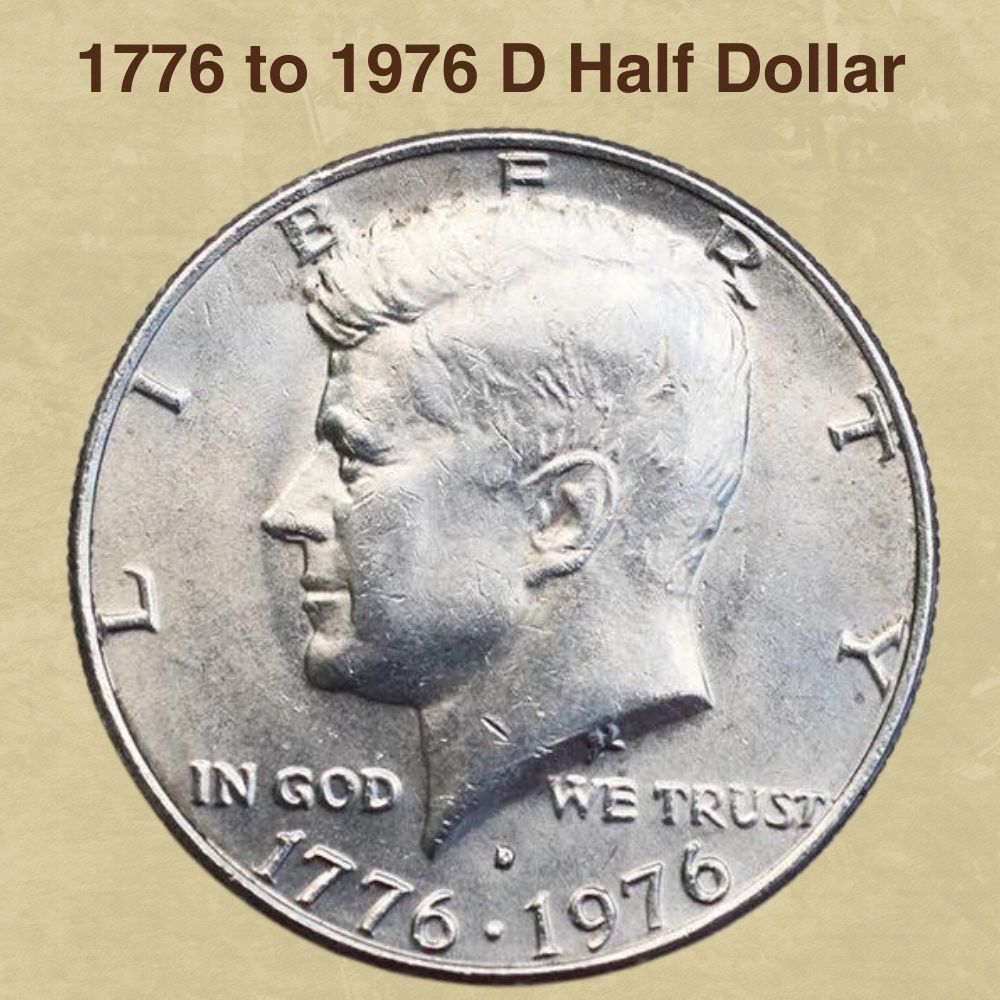
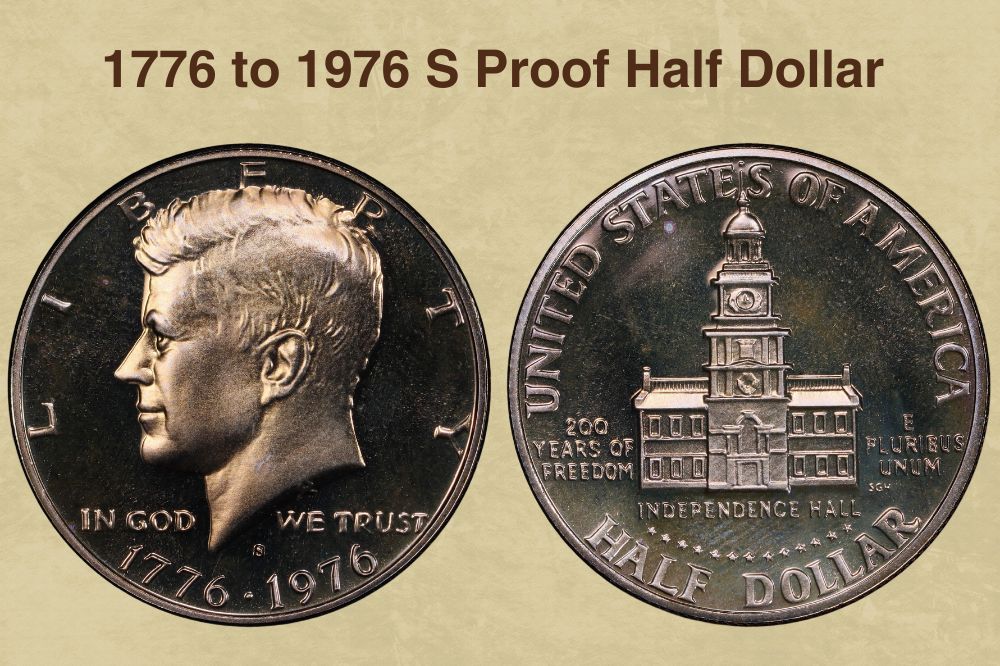
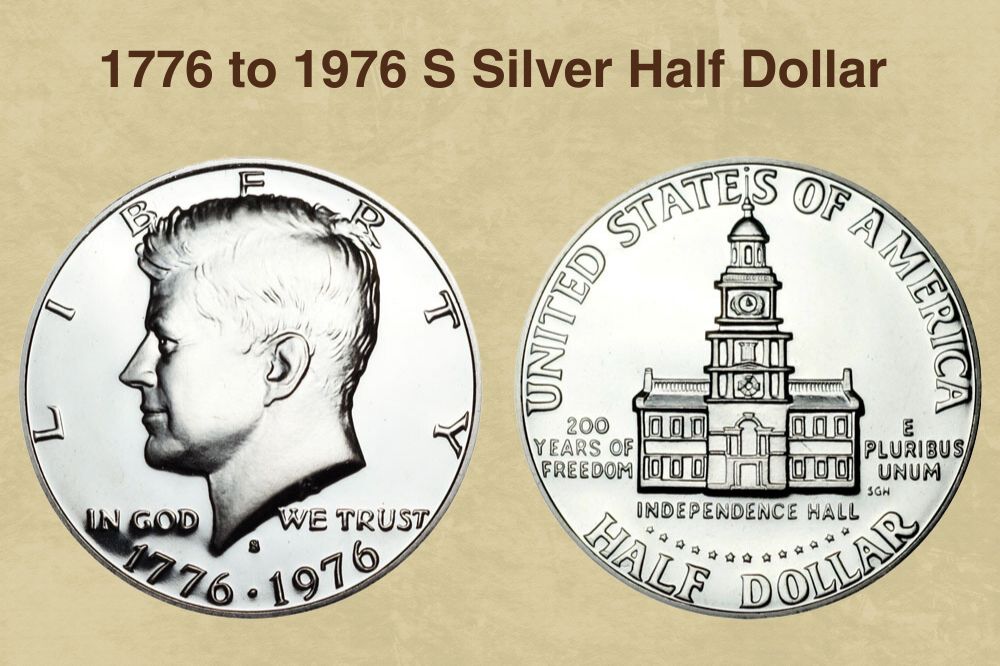
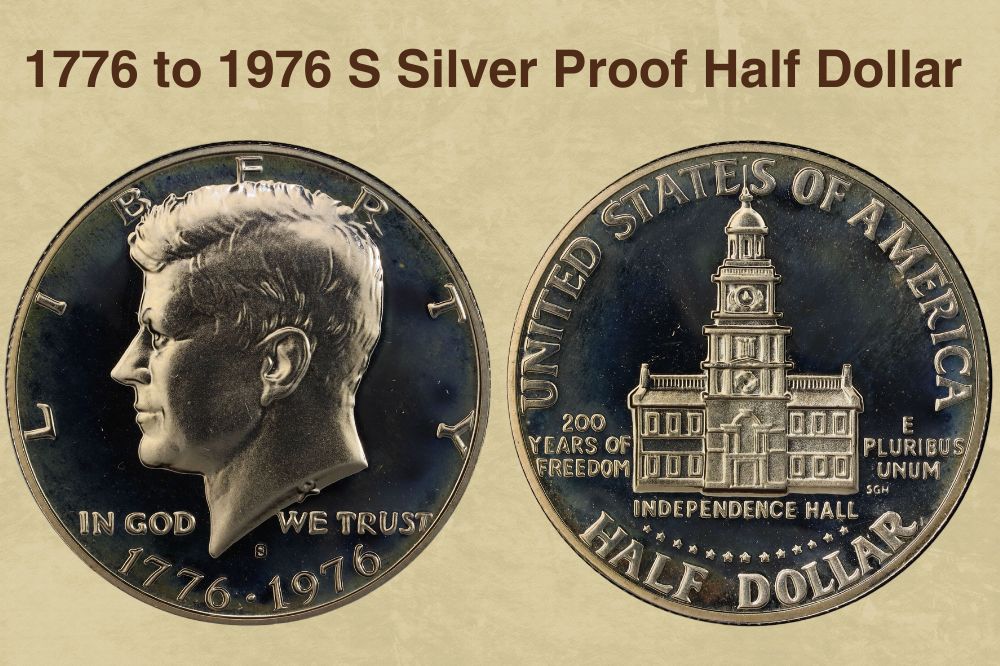
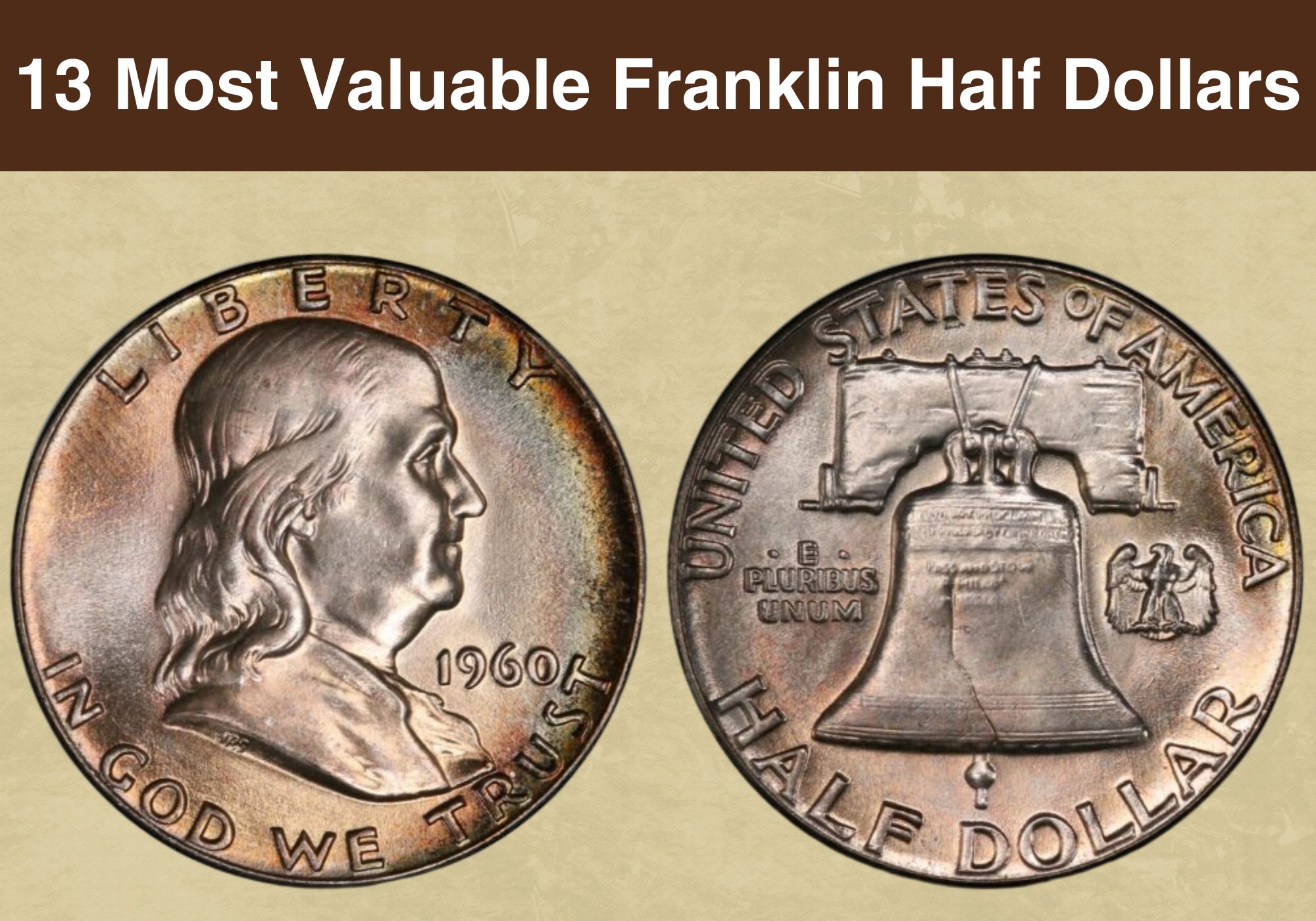
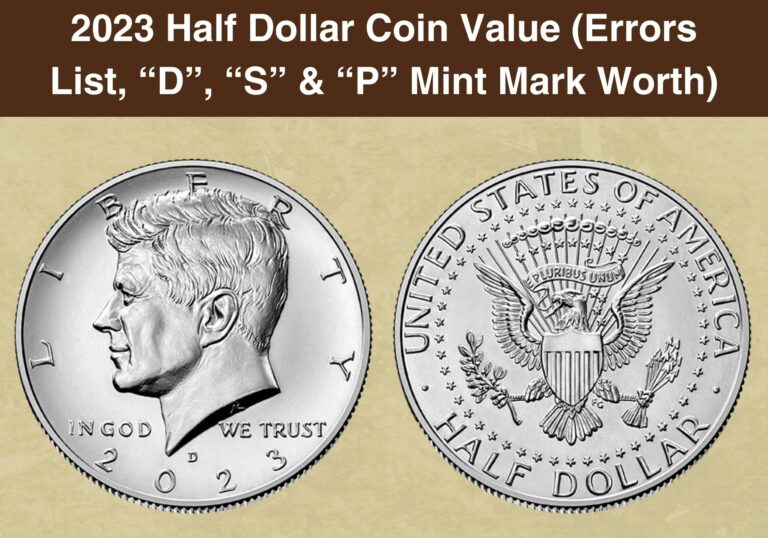
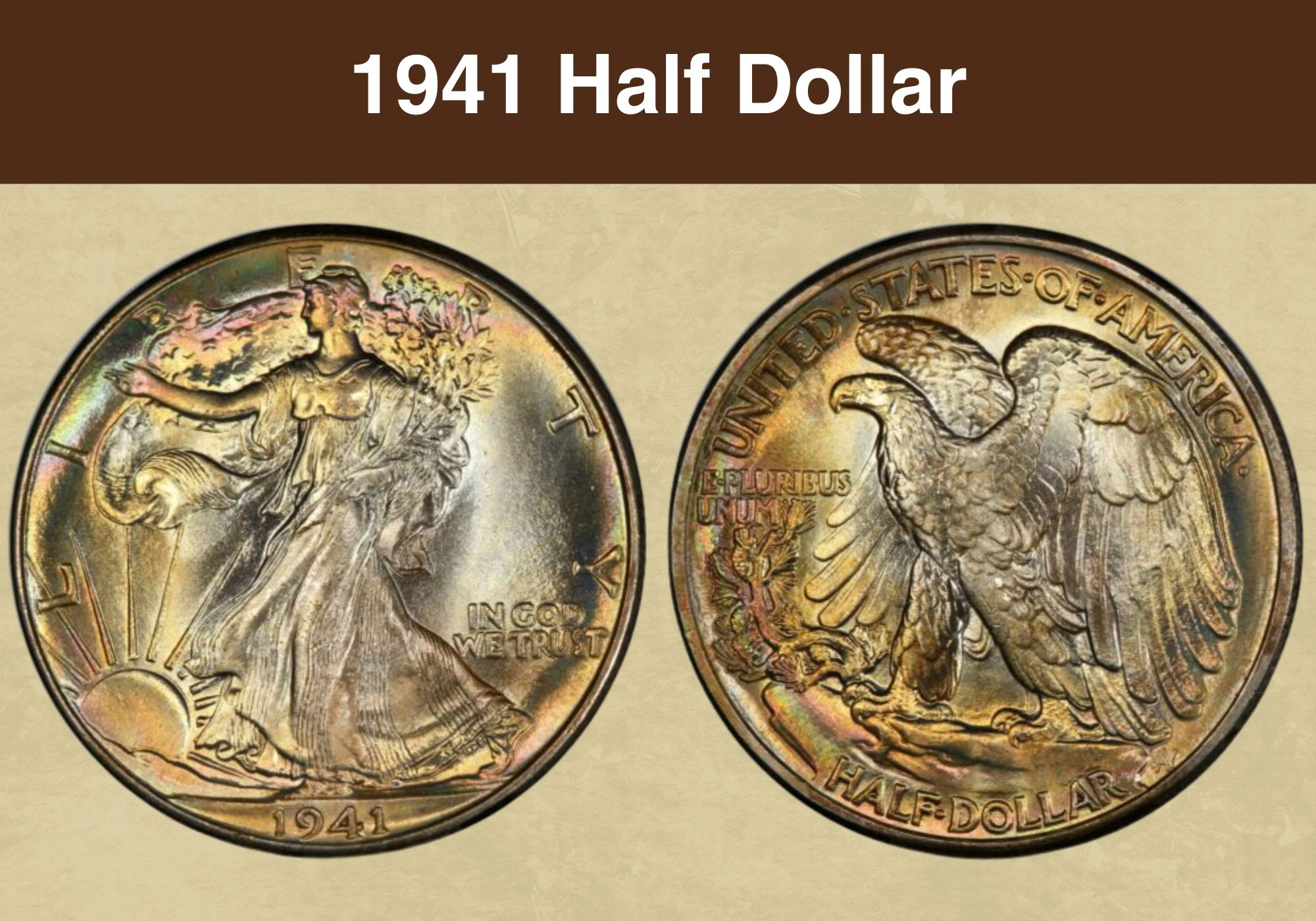
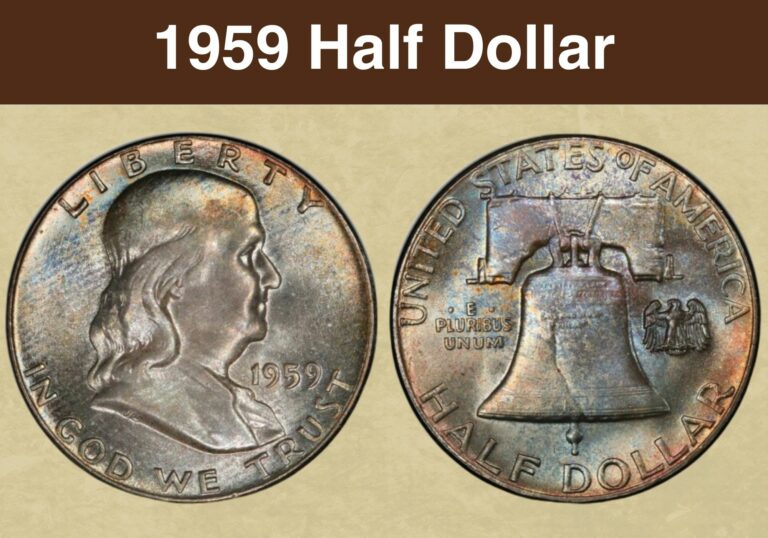
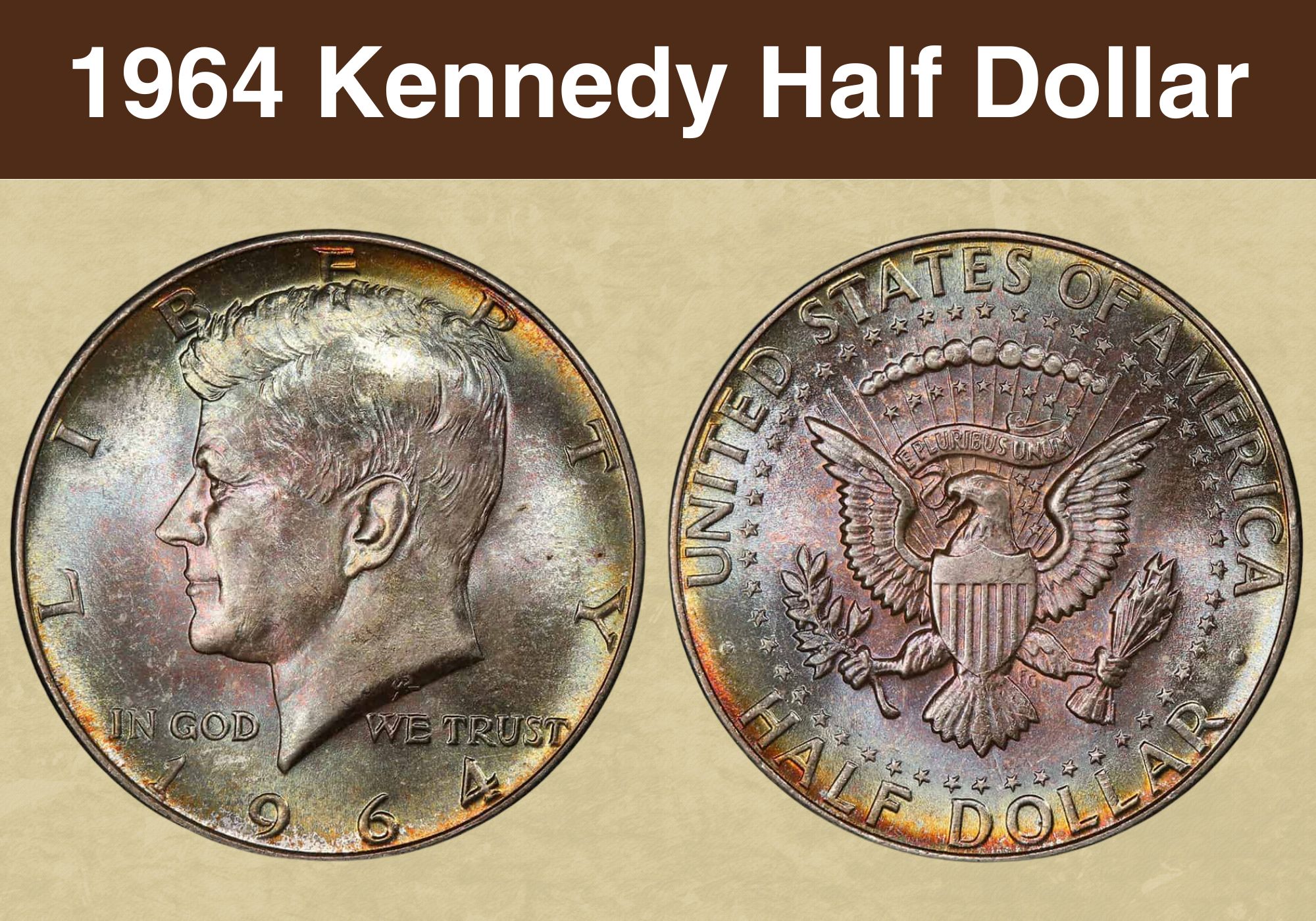
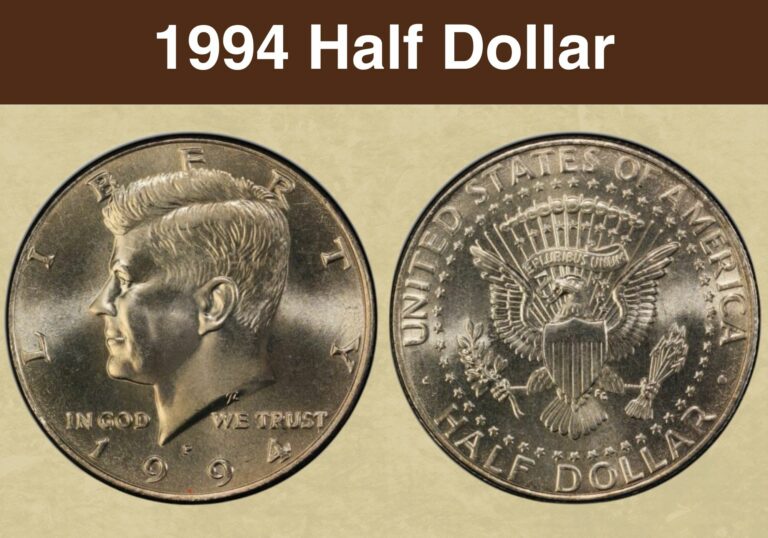
I have a Bicentenial Kennedy half dollar with his face on both sides. Can you help me figure out what it might be worth?
Cheryl
I have a half dollar 17,76, 1976 bicentennial with the H missing on independence hall on the back. What would this be worth
I have a 1776 to 1976 half dollar bicentennial with only a part of the INDEPEN–NCE HALL in the back and was wondering how much can this coin is worth to sell.